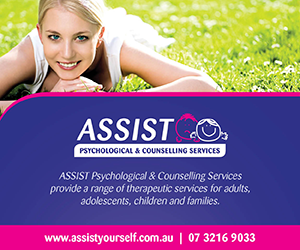The Federal Government announced the creation of an Expert Reference Group to oversee the National Mental Health Commission’s Review’s recommendations for the new National Mental Health Plan. In past efforts it’s failed the most vulnerable and disadvantaged in a society that lacks a real understanding of the herculean task the pursuit for effective treatment can be. Under the plan, individuals can qualify for up to ten Medicare subsidised sessions with a psychologist per year, once assessed and referred by a GP. However, there are significant barriers to seeking initial treatment in a culture which still misunderstands and stigmatizes mental illness. Research from the World Health Organisation (WHO) suggests the majority of people that experience a recent episode of mental illness will go untreated. Hopelessness, the deleterious accomplice of depression, is in itself a dark enough demon to triumph and an enormous obstacle to taking the first step, often leading to delaying treatment. 
A study by the Western Australian Health Commission conducted in 2006 discovered three out of four people with mental illness have reported they have experienced stigma, and one in five said if they were experiencing depression they would not tell anyone. Nonprofits such as Beyondblue and The Black Dog Institute have made considerable progress in reducing some of the stigma and granted the due attention deserved to the mental health of our citizens, and government initiatives such as the Mentally Healthy Workplace Alliance have also helped – but with four out of ten Australians not disclosing to their employer if they take a sick day due to depression, and an average of 14.6 sick days taken for an individual’s past depressive episode, better understanding of the contributing factors are obviously needed. Employers have a social and ethical responsibility to their employees psychological health, and at the minimum provide a healthy working environment. It’s often presumed that mental illness develops outside of the workplace, but with so much time and energy poured into occupational endeavours over the course of a lifetime, there’s no surprise it’s often been an exacerbator, if not a contributor, to mental illness. It will inevitably affect your ability to work – adding to the difficulty of remaining gainfully employed when suffering a mental illness; literally dragging yourself out of bed on the bad days, a majority of the time these sessions are scheduled during business hours – making it difficult for those on the nine to five to attend without missing work. Many companies in Australia have introduced mental health days into standard leave entitlements, and wisely so; if the reverberating mantra of happy employees equals happy customers championed by HR departments across Australia is to be given any credit.
On the other side of the coin, consider the vast number of people unable to work as a symptom of their illness. It’s impossible to predict how many sessions will be needed to address a particular type of mental illness, and at what frequency – if severe, in many cases ten sessions may be inadequate to make any real progress, and even so, is unrealistic to think that most will be in tip-top emotional health after ten sessions. The cost for appointments past the rebates is simply not a choice for most people out of work. When relying on approximately $560 a fortnight for all living expenses, emotional health will take a backseat to putting food in your stomach. If not to be considered a blanket solution, one must imagine these services rely on the assumption that professionals within the clinics can provide effective treatment for a hugely diverse pool of people experiencing a broad range of illnesses, from situational depression and major depression, mood and anxiety disorders, schizophrenia, difficult to diagnose or undiagnosable mental illnesses, to name a few.
To no fault of the GPs and psychologists involved, it’s understandable why some under the plan often seek paid alternative treatment as they feel not being adequately treated. Assuming to be altruistic in their pursuits to improve health it’s naive to think that all involved can successfully treat every patient that comes through the door. This is where at-risk individuals are the most disadvantaged – many lack an efficient network of friends and family to provide emotional and, optimistically, financial support for ongoing or additional treatment, and for some makes the transition from mentally ill and unemployed to mentally ill and homeless viciously flawless It’s where the causal nexus of homelessness blossoms; near impossible to seek treatment when homeless, even more so to commit to employment when homeless and mentally ill. Being such a tremendous strain on physical, emotional, and financial resources, it’s perhaps the most significant barrier to getting help. With the establishment of a Reference Group to advise the Government on potential changes, let’s hope the inconsistencies allowing the most vulnerable to be at risk are identified and addressed. The fact is many are simply unaware of what is available.As well as the National Plan, those relying on welfare can be eligible for the Access to Allied Psychological Services (ATAPS) allowing an initial six, and up to twelve, subsidised sessions with a psychologist per year. An almost aggressive approach to the emphasis and promotion of current services is a pivotal step in giving people the strength to get help. This coupled with continuing efforts from government and nonprofits to remove stigma and open up the treatment channels, and further action from influential parties – big business, sporting associations, military services, is needed to complement notable progress and effect cultural change.
This article first appeared Online Opinion, 26 May 2015.























